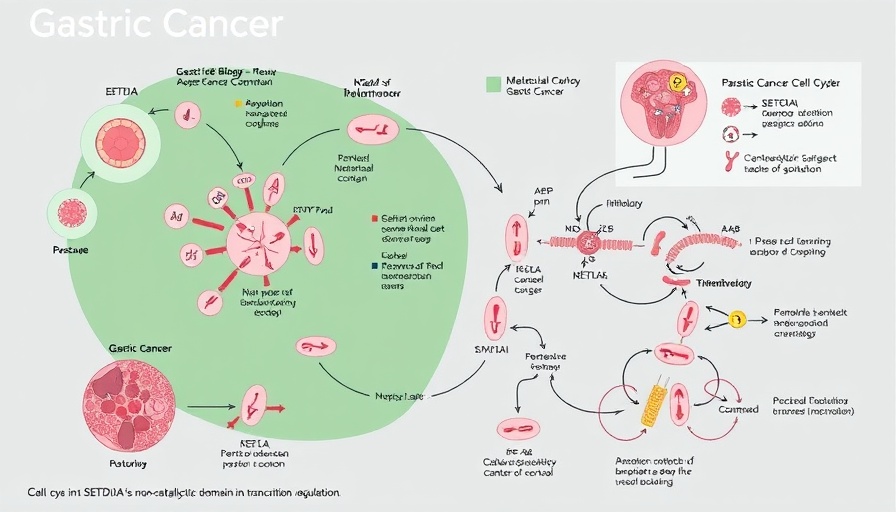
Decoding SETD1A's Enigmatic Role in Gastric Cancer
Research has illuminated the obscure role of SETD1A in promoting gastric cancer cell proliferation. While many biomolecules are heralded for their direct catalytic functions, SETD1A takes on a non-catalytic job that manages the E2F4–TAF6 axis, acting as a traffic controller in the cell cycle. Think of it as the friendly neighborhood guide that helps cells navigate their growth paths more effectively.
Why This Discovery Matters
For health-conscious readers, understanding the mechanisms behind cellular behavior can be vital for grasping the bigger picture of disease prevention and longevity. SETD1A's influence on cancer cell growth highlights how a seemingly minor protein can hold the keys to significant health concerns, emphasizing the importance of research in developing targeted therapies. This knowledge bridges the gap between cellular processes and real-world health outcomes.
Insights Into the E2F4–TAF6 Axis and Cancer
The E2F4 transcription factor and the TAF6 co-activator work in tandem, regulating genes necessary for proper cell cycle progression. By manipulating this axis, SETD1A potentially fosters an environment conducive to cancer cell proliferation, which raises red flags for researchers and healthcare professionals alike. It calls attention to how intensely interconnected our biological systems are, and how one protein can upend regulated cellular order.
Connecting the Dots: From Research to Real Life
This research offers a treasure trove of information for biohackers and wellness enthusiasts. By understanding how SETD1A and its pathways function, individuals can better approach their health regimens with knowledge about their cellular systems. This notion of mindfully enhancing cellular health not only pertains to preventing diseases like cancer but stretches into broader avenues of aging and healthspan optimization.
Practical Insights for Health Optimization
When we talk about optimizing wellness, let’s consider how lifestyle choices resonate with the mechanisms behind cellular health. A healthy diet rich in antioxidants may help mitigate the oxidants that fuel cancer development. Incorporating targeted supplements known for their anti-aging and cellular health properties presents another layer of current research applied to your daily choices. Start with a focus on whole foods, and don't be shy about engaging in healthy biohacking habits like fasting and exercise to improve your longevity.
Future Trends in Aging and Cancer Research
As the field of aging research evolves, understanding proteins like SETD1A will be crucial in identifying novel therapeutic strategies. Future predictions suggest enhanced therapies that target specific proteins or pathways could revolutionize cancer treatment. Imagine personalized health strategies that account for individual genetic makeup – a future that is not far off!
Conclusion: Why You Should Care About SETD1A
In summary, insights gleaned from SETD1A and its non-catalytic role in gastric cancer shed light on pivotal connections between cellular health and disease prevention. As we engage with cutting-edge health research, it's essential to weave these findings into our own health strategies. Considering how complex and intricate our biology is, these discoveries remind us why staying informed about health and nutrition is critical for longevity.
Whether you're a seasoned biohacker or just beginning your wellness journey, remember that knowledge is power. Lean into expert health insights, prioritize nutrition, and stay active. The key to a vibrant, disease-free life is a personal commitment to understanding and optimizing your health. Are you ready to embrace the journey?
 Add Row
Add Row  Add
Add 




Write A Comment